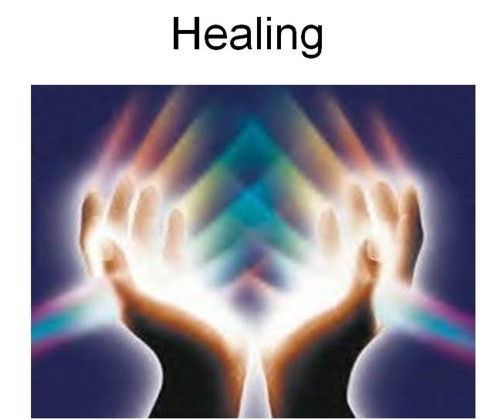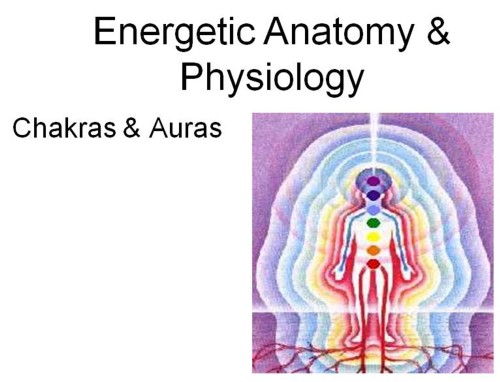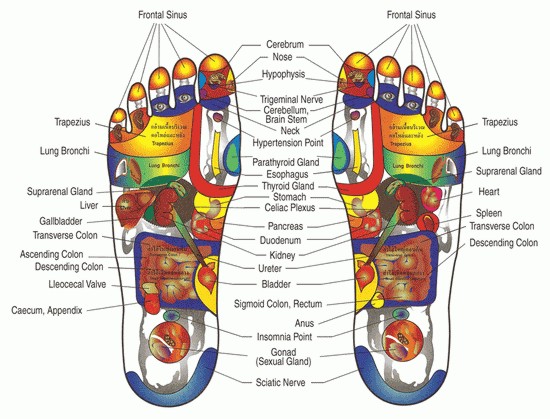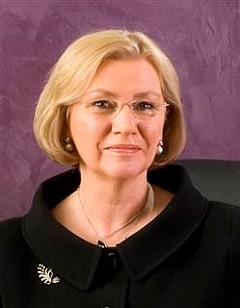|
In 2009 I asked Napier University Edinburgh for details of what was taught on its herbal medicine "BSc" course. At first it was refused, but then (as often seems to happen when threatened with exposure) the course was closed, and Napier sent what I’d asked for without waiting for the judgement from the Scottish Information Commissioner, |

|
Some samples of the dangerous nonsense that used to be taught on Napier’s herbal medicine course (now closed) have been exposed in “Hot and cold herbal nonsense from Napier University Edinburgh: another course shuts“.
That sadly doesn’t mean that Napier has stopped teaching nonsense. It offers a 3 year Honours BA degree in "reflexology" (the only other place in UCAS is the University of Wales Institute, Cardiff (UWIC), which offers a “BSc(Hons)”, though nine other places offer foundation degrees or HND)
Napier also offers a BA (Hons) in Aromatherapy, according to UCAS
Clearly quackademia has not died entirely yet, though it is on its way. It has closed down entirely at the University of Salford and the University of Central Lancashire. And when I wrote about quackademia in Nature in 2007 there were five "BSc" degrees in homeopathy. Now UCAS does not list a single one. It has even vanished in the home of woo, the University of Westminster.
When I asked Napier for teaching materials used in reflexology and aromatherapy, the request was, as usual. refused. In a letter dated 20 August 2010, David Cloy, Head of Governance & Management Services, wrote that disclosure of the materials “. , would be substantially prejudicial to the Universitys [sic] commercial interests”.
Scotland has its own Freedom of Information (Scotland) Act, and its own Information Commissioner, so it wasn’t possible to rely on the win that I had with the Information Commission (England and Wales). An Appeal was duly lodged on September 3rd 2010. They were a lot faster than before and their decision, dated 9 December 2010, was again almost completely in my favour [download the whole decision]. The decision ended thus.
The Commissioner finds that Edinburgh Napier University (the University) failed to comply with Part 1 of the Freedom of Information (Scotland) Act 2002 (FOISA) in responding to the information request made by Professor Colquhoun. The University wrongly withheld information under section 33(1)(b) of FOISA, and thereby failed to comply with section 1(1) of FOISA. It also failed to provide Professor Colquhoun with notice that certain of the information he had requested was not held, as required by section 17(1) of FOISA. The University also failed to provide Professor Colquhoun with reasonable advice and assistance in relation to his information request, as required by section 15(1) of FOISA.
The Commissioner therefore requires the University to provide the withheld information, and the advice detailed in paragraph 16 of this decision notice, by 27 January 2011.
There is quite a lot of material, so I’ll restrict myself to a few quotations.
Therapeutic Touch
This makes an interesting example because it is so obviously fraudulent. It is particularly interesting because of a famous paper published in 1996, in the Journal of the American Medical Association (read the paper) by Emily Rosa aged 9. She devised a simple experiment that showed convincingly that healers could not do what they claimed. Nobody has ever detected the magic rays that are said to emanate from the hands of the ‘healer’/confidence trickster. It is all pure make-believe. Like so many things of its sort, there is no ancient wisdom involved. It was invented in 1977 by a nurse. Watch the video of the test on YouTube, or the less reverent version by Penn and Teller. Also worth reading is Why Therapeutic Touch Should Be Considered Quackery.
I was sent a set if slides that are used for teaching students at Edinburgh Napier University about "Therapeutic Touch" (part of course CPT08104 “Pathophysiology Insights to Practice”)..
When reading these, remember that this is not a course on cultural history, or a course about the pre-scientific beliefs of primitive tribes as in anthropology. It is taught to students to enable them to charge money to sick and desperate people.
|
Rogerian Perspectives on Therapeutic Touch
– seen as a knowledgeable and purposive patterning of patient-environment energy field process in which (the nurse) assumes a meditative form of awareness and uses her/his hands as a focus for the patterning of the mutual patient-environment energy field process”. Four Principal (Conceptual ) Building Blocks. Energy Fields. The fundamental unit of the living and the non living” (Rogers 1986).
Openness
|
|
Pattern – the distinguishing characteristic of the energy field. A very useful concept – it helps with understanding the uniqueness of the individual – human existence and movement of energy. Patterns of relating – responding
Pan-dimensionality – a non-linear domain without special / temporal attributes
|
|
Rogers model also has 3 cardinal principles. Three Principles of Homeodynamics:
Teilhardt de Chardin (Essay on Human Spirituality) A comparative Explanation of Rogers’ laws of Homeodynamics )
|
All of this is so many meaningless words. It has the vaguely sciencey sound beloved of quacks (and post-modernists), but it is a million miles from science.
Empirically it just doesn’t work.
Sadly the slides from Napier did not include any helpful illustrations, but these two, from a similar lecture given at the University of Westminster should make it all clear.


Aromatherapy
There’s some perfectly sensible stuff about the chemistry of essential oils. It’s when it comes to what they are good for that things rapidly come unstuck. Table 17 (extracted from a handout on essential oil chemistry) has all sorts of suggested uses
Energising
Essential oils can correct deficits or blockages in energy
Difficult to back up with scientific research, but nevertheless an important property in aromatherapy
Synergistic blending using the energetic approaches
So it is "important" but there is no evidence for it. The Table is prefaced by a disclaimer of sorts.
There is a body of anecdotal information concerning the potential therapeutic actions of essential oils, such as their anti-inflammatory, sedative and analgesic effects (Bowles 2003).
Despite some of the potential uses of essential oils contained in Table 17, it is not the role of the aromatherapist to treat specific conditions such as infections. However, the therapist can include appropriate oils in a holistic context, and can offer aromatherapy support preparations for home use.
At this point the handout does give quite strong hints that there is no good evidence that any of it works. In that case, why are they doing a three year degree in it?
Then of course we get on to the 19th century vitalism (being taught in the 21st century) and the usual ‘energy’ nonsense. For example
Holmes (1997) proposed that the nature of a fragrance can bring about specific psychotherapeutic effects. Using three fragrance parameters – tone (odour quality), intensity and note (evaporation rate), with tone being the most significant, and six fragrance categories – spicy, sweet, lemony, green, woody and rooty. He proposes that the nature of a fragrance will bring about specific psychotherapeutic effects. The following is a summary of his suggestions.
‘High/Top tone’ oils such as those from the citrus group, the Myrtaceae family and also ylang ylang extra and 1, lavender and mimosa abs. will have a stimulating, uplifting effect.
‘Low/Base tone’ oils including vetivert, patchouli, sandalwood and also tuberose, hay and oakmoss abs., will have a depressing, sedating effect.
Gabriel Mojay is quoted as saying
“Fragrance is the primary effective quality of essential oils. By this we mean their most immediate and generalised effect on the body and mind. This effect is first and foremost an energetic effect – as it is the vital energy of the human organism that first responds to an essential oil and its fragrance.”
These are just more empty words, woolly thoughts about long-discredited ideas of vitalism. They are presented entirely uncritically.
Reflexology
Reflexology is based on the utterly barmy proposition that "… reflexologists claim to be a system of zones and reflex areas that they say reflect an image of the body on the feet and hands, with the premise that such work effects a physical change to the body".
Regardless of its absurd premises, it just doesn’t work. A review by Ernst (2009) concludes
"The best evidence available to date does not demonstrate convincingly that reflexology is an effective treatment for any medical condition."
It is simply a foot massage, There’s nothing wrong with that, if you like that kind of thing, but please don’t pretend it is anything more
One handout lists, under the treatments for Migraines and Headaches
- Homeopathy (applying the principle of similimum)
- Herbal
- Massage for relaxation
- Reflexology (addressing reflexes relating to head, neck, solar plexus, spine, pituitary & digestive systems).
- Nutritional therapy
- Accupressure.[sic]
- Bach Flowers may be useful
No evidence is cited for any of them, not doubt because next-to-none exists.
A three year degree in rubbing feet is just an absurdity.
The material that was sent about reflexology was very thin. I’ve asked for more, but in a sense it doesn’t matter, because all one has to do is look at a standard reflexology diagram to see what a load of unmitigated nonsense it is. There isn’t the slightest reason to think that an area on your big toe is ‘connected’ in some unspecified sense, to you nose, It is just preposterous made-up junk.

Diagram from Scienceblogs
Who is responsible?
I’m quite happy to believe that the people who teach this new-age nonsense actually believe it.
|
What I would like to know is whether the Principal and Vice-Chancellor of Edinburgh Napier University believes it. She is Professor Dame Joan K. Stringer DBE, BA (Hons) CertEd PhD CCMI FRSA FRSE. That’s an impressive string of initials for somebody who seems to defend 19th century vitalism as a suitable subject for an honours degree. I could ask her, but such letters rarely get a response. |



Utter gobbledegook that rightly deserves to be exposed.
I guess you probably know the Richard Feynman reflexology story from his famous Cargo Cult Science lecture, David – but in case anyone reading doesn’t, you can find it at the end of a blogpost of mine on the foot-feelers:
“Feynman on foot fondling”
And congrats on another good job of naming and shaming.
Where on the reflexology chart is the foot represented? And wouldn’t that also, by definition, contain a complete representation of the body (as well as another foot, and another representation ad infinitum)?
Or can reflexologists cure everything except podiatry problems?
EoR
Ah! That’s why they invented ear reflexology, which, oddly enough, contains the ear. It’s a weird made-up world they live in.
Great stuff. I hate to admit I went there for a MA about 20 years ago and was really appalled by the quality of teaching. The place seemed a bit of a joke and I abandoned by course in the end. Does generate a good income for the staff there of course, they can teach this rubbish and award highly dubious degrees all funded by the very generous London taxpayer.
Yeah, but reflexology helps you get pregnant. It was in the Daily Mail yesterday so that’s how I know.
Wonderful pic of auras and chakras! This link is good for that and you can even buy a camera to take a pic of your aura….
http://www.auraphoto.com/index1.shtml
As for the foot diagrams, blimey, I’ve not often seen such a colourful version. It’s jolly enough for a Christmas card!
More seriously, if those suggested treatments for migraines were any use at all – and I know of no evidence that any of them works other than as a placebo – then there would be no need either for the existing triptan group of drugs, nor for any more research into treatments.
It is really shocking that this bollocks can constitute a degree. It deceives the students who then, often unwittingly one must assume, deceive and give false hope to sick people. The worried well I am not concerned about.
‘What I would like to know is whether the Principal and Vice-Chancellor of Edinburgh Napier University believes it.’
And
‘That’s an impressive string of initials for somebody who seems to defend 19th century vitalism as a suitable subject for an honours degree. I could ask her, but such letters rarely get a response.’
You may be right but I think it’s somewhat unfair to rush to judgement on someone before you’ve even approached them on the subject (you do use the term ‘rarely’ rather than never).
Being charitable, maybe her deputies didn’t brief her correctly, her field is, after all, Public Administration. And Dame Joan Stringer may have many calls on her time; she is currently I understand; Board Member of the Higher Education Statistics Agency; Board Member of the Leadership Foundation for Higher Education; Member of the Universities Scotland Executive Committee; Chair, Education UK Scotland; Convenor, Universities Scotland International Committee; Board Member of the National Theatre of Scotland. She presumably contributes to Education UK, which informs overseas students of the higher educational opportunities in the UK and who in turn bring much needed cash into the UK University sector.
I’m sure as a responsible Principal of a UK University she does not want to see students wasting their resources on qualifications in mumbo jumbo magic masquerading as medical science. You are surely right to use mockery to uncover the bogus and the fraudulent. You know, as well as anybody, that when a university is, let’s say, rather lax in adequately vetting what is taught as science before too long it may be politically difficult to do anything about it.
Let me turn Professor Colquhoun’s query about Dame Joan Stringer back to him. Does the President and Provost of UCL believe in what is taught for some UCL science degrees? Is Professor Colquhoun happy with what is taught in the science and medical faculties at University College? How many requests for teaching material used at UCL has he made? Has he had to resort to FOI requests? Are all UCL science degrees immune from mockery? Sometimes when one shines the spotlight on something in the far distance there is the danger that one allows nonsense to proliferate in the darkness directly under one’s nose. Equality of treatment surely demands a little mockery nearer home when required.
@CrewsControl
I have written to Professor Stringer, and it will be interesting to see whether I get a reply.
So far, the only person to reply has been Terence Kealey, VC of Buckingham. He’s a man with political views that are more or less diametrically opposed to mine, yet he’s interested in criticism, and lacks the pomposity of many of his ilk. The outcome of that correspondence was very satisfactory, as recounted at http://www.dcscience.net/?p=2881
It seems to me to be pretty obvious why I don’t get answers. If challenged, the VC has two options. Either they defend the degree, while knowing it to be nonsense. Or they say “sorry I realise now that we are teaching nonsense: I’ll close it down”. Neither of these options is at all palatable, so I suppose it isn’t surprising that they keep quiet. Nevertheless, quite often the courses do close down once it’s revealed to the public what they are teaching.
You say “I’m sure as a responsible Principal of a UK University she does not want to see students wasting their resources on qualifications in mumbo jumbo magic masquerading as medical science”. Well, one hopes not. But since that’s exactly what’s happening, we’ll have to see what she does about it.
I see from Napier’s web site that the Faculty that hosts the mumbo jumbo did rather well on the RAE. No doubt it did well because,. just like the course validations, the assessment is done by ‘experts’ in the sort of mumbo-jumbo that is being assessed. Neither form of assessment is worth the paper it’s written on (a point accepted by the Information Tribunal in the case of UCLAN -see http://www.dcscience.net/?p=2485
You ask also about UCL. I’m not aware of any degrees in crackpot medicine at UCL so no analogous case exists. The case of our psycho-analysis unit has been raised more than once on this blog as a candidate. It wouldn’t surprise me at all if it were as baseless as reflexology, but it is just too far from areas that I know about for me to take it on. If anyone else wants to they are welcome. But if you think that I’m never critical of anything that happens at UCL you have clearly not been reading the diary pages on this blog. Several items this year alone have been critical -see http://www.dcscience.net/?page_id=3179#latest
I think it is a bit disingenuous to suggest that Prof Stringer sits on so many committees that she hasn’t noticed that her university, until recently taught herbalism and still teaches aromatherapy and reflexology. Of course it could be that she thinks that these are quite appropriate subjects for honours degrees. I hope not, though. That would be the sort of leadership we can do without.
David,
Whilst I would agree entirely that universities should not teach such nonsense as reflexology or therapeutic touch as fact, is there not a risk of conflict between your objections to the teaching of such nonsense and your defence of academic freedom?
@Chris
I’m having a bit of difficulty reconciling the first and second parts of your comment.
Anyone is free to propose a BSc (Hons) in witchcraft to their university. That is their academic freedom. Mine is to say that I don’t think it’s a good idea.
Does that answer the question?
“Does that answer the question?”
Not entirely.
Obviously you should be able to criticise the decision of Edinburgh Napier to have a course in therapeutic touch or indeed to make critical observations regarding a hypothesis of another researcher on ion channels. That is simple freedom of speech.
However, you seem (to me) to be going further in suggesting that the Vice Chancellor should have closed the course down.
Would you take the same view if a university had a creationist as Vice Chancellor and decided to “review” the courses offered by the Zoology department?
Chris – if a creationist shut down zoology, that would not be academic freedom. It would be a triumph of unscientific opinion over science. For Napier to shut down reflexology etc is not remotely similar. Were they to teach these subjects as fun, or historics, that would be one ting, but they are teaching them on the basis of their being scientific. That’s simply wrong, and so should be stopped.
@Chris
Yes if course I think she should close it down. Why else would I spend all this unpaid time on FOIA requests and writing blogs? The reason that I think that it should be closed because, in my opinion, the courses bring Edinburgh Napier University into disrepute. That is the worst sin you can commit these days (it used to be gross moral turpitude).
I know it isn’t easy to get the (senior) staff these days, but I don’t think we have any creationist vice-chancellors yet. So I’ll face that problem when it arises.
[DC first version of this response was shorter because it was done on phone form Skeptics in the Pub while listening to Mark Henderson talk about the Geek Manifesto]
The university where I work recently had a well-being week. Staff were offered Indian head-massage and reflexology. Acupuncture is also now being offered. I objected on the grounds that a university should not be peddling this kind of quackery. The patronising reply was that lots of staff liked it, so it must be good.
@Rob Spence
I presume that the response came from your HR department? What you got is pretty typical. The condescension shown by people who know nothing to academics is astounding. I hope that VCs have the sense to fire the people who arrange that sort of well-being jamboree now that the crunch is arriving. But I doubt it.
@David – yes, Human Remains, inevitably. I pointed out that a glass of at desk Merlot would make me feel good, but they didn’t think that would be appropriate.
@Rob Spence
I dare say that, for an extensive institutional wine cellar to hand, and the occasional glass of at-desk Merlot, one needs to make it to the glittering spires of Oxbridge…
[…] promised in my last post about Edinburgh Napier University, I wrote to the vice-chancellor of the university, Professor Dame […]
[…] Information Commissioner agreed with that for England and Wales and ordered material to be sent. Edinburgh Napier University teaches reflexology, aromatherapy and therapeutic touch. Scottish Inform…. Some of the horrors so discovered appeared in Yet more dangerous nonsense inflicted on students by […]
How strange to stumble upon this ill informed rant. I have just graduated from Bath with an Msc in Development studies having been a student on the BSC Herbal medicine at Napier some years ago. I am rational and grounded. I can tell you what was in that course, it was actually very much based on western science, anatomy and physiology, biochemistry, biological molecules, pharmacology, botany, and clinical medicine, and obviously traditional usage of medicinal plants (which can i remind you that 40% of all biomedical drugs are based on any way!) so there is really nothing that wacky about it. I am a natural sceptic and feel that it is healthy position to take when considering alternative therapies, I also have no time for angel healing or any of that rubbish. But I really feel that you have given a very one sided and journalistic view of it all, the course teachers and admin staff were people of dignity, kindness and some very intelligent. If you want to talk about dishonest science, have a look at the actions and behavior of Drug companies! who are often discovered to have altered trial information to hide side affects of negligible benefit.
@JessicaM
I have, at http://www.dcscience.net/?p=3200 revealed some of the things that were taught on your now defunct course. Can you seriously defend these slides as being science? The fact that there is some real science mixed in on the course is not really a defence. Herbalism consists for giving patients unknown doses of ill-defined mixtures of drugs, most of which have not been shown to work.
As for the corruption by big pharma, I suggest that you take a look at http://www.dcscience.net/?p=193
and at http://www.dcscience.net/?p=5538
As you see, I’m doing what I can about that. What are you doing?